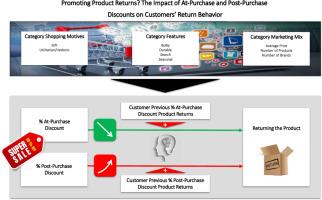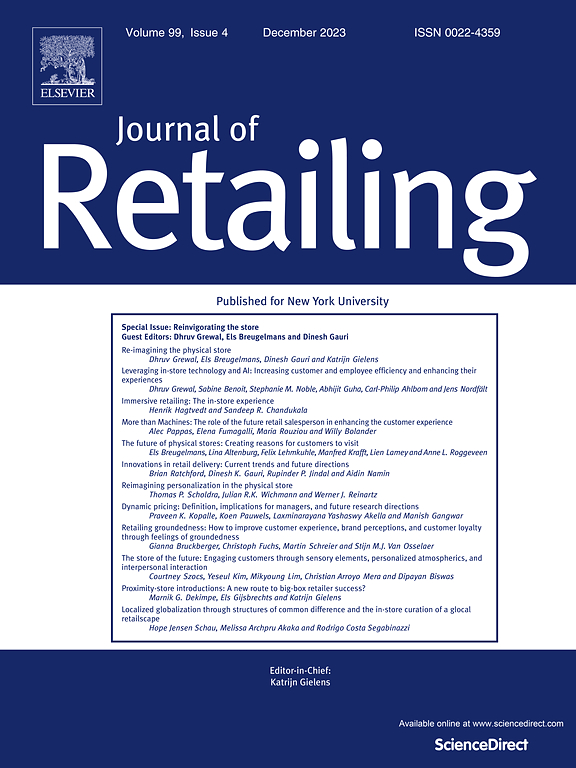Promoting product returns? The impact of at-purchase and post-purchase discounts on customers’ return behavior
IF 10.2
1区 管理学
Q1 BUSINESS
引用次数: 0
Abstract
Online retailers dynamically adjust product prices, potentially influencing both purchase and return behavior of customers. In particular, price discounts may affect returns not only for purchases made during the discount period (at-purchase discounts) but also for purchases made beforehand if a lower price is observed within the return window (post-purchase discounts). This study examines the impact of both discount types on product returns, using transaction data from a major European generalist online retailer comprising nearly 84 million purchases and over 37 million returns across >300 product categories. Results indicate that at-purchase discounts are associated with a linear decline in return rates, whereas post-purchase discounts above 25 % increase return rates in a non-linear fashion. On average, the adverse effects of post-purchase discounts outweigh the favorable effects of at-purchase discounts for discounts exceeding 40 % (20 %) among customers without (with) discount-driven return experience. These effects vary considerably across product categories, depending on shopping motives, category characteristics, and marketing mix. In the end, retailers should recognize that deep discounts may inadvertently promote product returns.

促进产品退货?购时和购后折扣对顾客退货行为的影响
在线零售商动态调整产品价格,潜在地影响顾客的购买和退货行为。特别是,价格折扣不仅会影响在折扣期间购买的商品的退货(购买时折扣),而且还会影响在退货窗口内观察到较低价格的事先购买的商品(购买后折扣)。本研究考察了两种折扣类型对产品退货的影响,使用了欧洲一家主要的综合性在线零售商的交易数据,其中包括300个产品类别的近8400万次购买和超过3700万次退货。结果表明,在购买折扣与线性下降的回报率,而购买后的折扣超过25%,以非线性的方式增加回报率。平均而言,在没有(有)折扣驱动的退货体验的顾客中,如果折扣超过40%(20%),购后折扣的不利影响大于购时折扣的有利影响。根据购物动机、品类特征和营销组合,这些影响在不同的产品类别之间差别很大。最后,零售商应该认识到大幅折扣可能会在不经意间促进产品退货。
本文章由计算机程序翻译,如有差异,请以英文原文为准。
求助全文
约1分钟内获得全文
求助全文
来源期刊

Journal of Retailing
BUSINESS-
CiteScore
15.90
自引率
6.00%
发文量
54
审稿时长
67 days
期刊介绍:
The focus of The Journal of Retailing is to advance knowledge and its practical application in the field of retailing. This includes various aspects such as retail management, evolution, and current theories. The journal covers both products and services in retail, supply chains and distribution channels that serve retailers, relationships between retailers and supply chain members, and direct marketing as well as emerging electronic markets for households. Articles published in the journal may take an economic or behavioral approach, but all are based on rigorous analysis and a deep understanding of relevant theories and existing literature. Empirical research follows the scientific method, employing modern sampling procedures and statistical analysis.
 求助内容:
求助内容: 应助结果提醒方式:
应助结果提醒方式:


